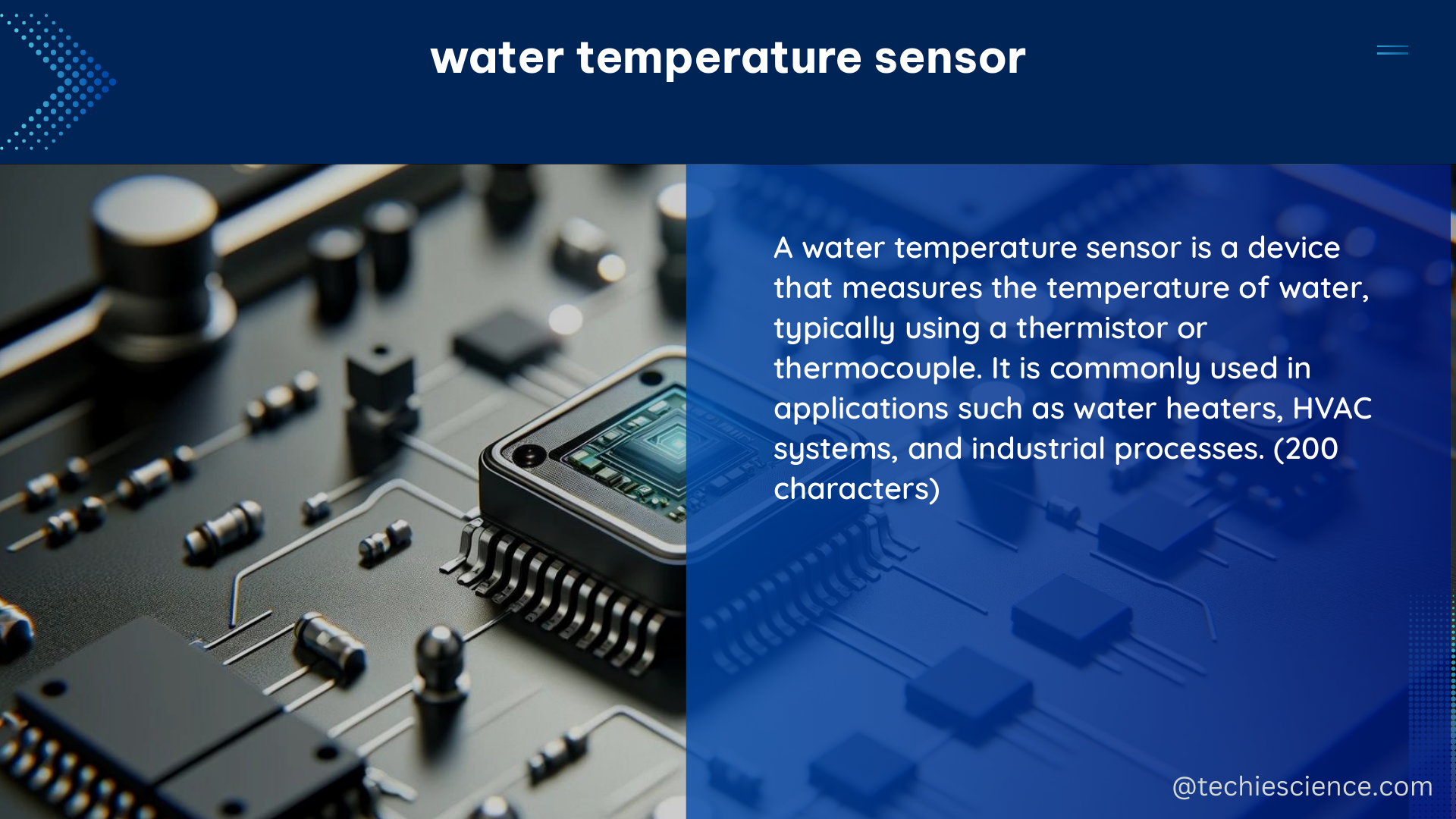Water temperature sensors are crucial for monitoring and understanding aquatic ecosystems, as temperature influences various physical and biological processes in streams, lakes, and other bodies of water. These sensors play a vital role in environmental research, water resource management, and aquaculture, providing valuable data for decision-making and scientific analysis.
Understanding the Key Factors in Water Temperature Sensor Selection
When selecting a water temperature sensor, there are several critical factors to consider:
Accuracy and Precision
The accuracy of a temperature sensor refers to its closeness to the “true” or actual temperature value, while precision describes the degree of consistency in repeated measurements under unchanged conditions. Sensors with high accuracy and precision are essential for reliable data collection and analysis.
Resolution and Measurement Range
Resolution is the smallest change in temperature that the sensor can detect, while the measurement range encompasses the full spectrum of temperatures the sensor can measure. Choosing a sensor with the appropriate resolution and measurement range is crucial to capture the expected temperature variations in the target water body.
Durability and Lifespan
Water temperature sensors must be durable enough to withstand the harsh aquatic environment, including exposure to water, sediment, and biofouling. The sensor’s lifespan, determined by factors such as battery life and housing integrity, is another important consideration.
Memory and Data Logging
Many water temperature sensors come equipped with internal memory and data logging capabilities, allowing for continuous, long-term monitoring and the ability to retrieve historical data. This feature is particularly valuable for remote or hard-to-access locations.
Power Consumption and Battery Life
The power consumption and battery life of a water temperature sensor are crucial, especially for applications where access to the sensor is limited or where frequent battery replacement is not feasible. Sensors with low power consumption and extended battery life are preferred for long-term deployments.
Designing Smart Water Temperature Sensors

The design of smart water temperature sensors often involves the use of intrinsically accurate functions of absolute temperature, such as the base-emitter voltage (U BE), in conjunction with Boltzmann’s constant (k), electron charge (q), and emitter current ratio (p). These parameters are used to obtain a temperature-independent band gap reference voltage (U REF), which, when combined with an analog-to-digital converter (ADC), determines the ratio of α∆V BE and V REF to obtain a digital output (D temp) that is proportional to the temperature.
This approach ensures high accuracy, sensitivity, and stability, making smart water temperature sensors well-suited for long-term and high-density monitoring of water and air temperatures in estuarine and coastal areas.
Deploying High-Density Water Temperature Monitoring Systems
In recent years, the deployment of smart water temperature sensors in high-density networks has enabled researchers to analyze the thermal dynamics of aquatic ecosystems in greater detail. These sensor networks have demonstrated exceptional accuracy, sensitivity, and stability, providing valuable insights into the complex thermal patterns and processes within water bodies.
DIY Water Temperature Sensor Projects
For those interested in building their own water temperature sensors, there are several resources available that provide step-by-step instructions and guidance:
-
Building a DS18B20 Waterproof Temperature Sensor: This tutorial covers the process of creating a waterproof temperature sensor using the DS18B20 digital temperature sensor and an Arduino board.
-
Raspberry Pi Temperature Sensor Projects: DS18B20, DHT11, and DHT22: This guide explores the use of various temperature sensors, including the DS18B20, DHT11, and DHT22, with a Raspberry Pi for water temperature monitoring applications.
-
How to Build a Water Temperature Monitoring System with Arduino and ESP8266: This project demonstrates the construction of a water temperature monitoring system using an Arduino board and the ESP8266 Wi-Fi module, allowing for remote data access and monitoring.
These DIY projects offer opportunities for hands-on learning, customization, and the development of cost-effective water temperature monitoring solutions.
Conclusion
Water temperature sensors are essential tools for understanding and monitoring aquatic ecosystems. By considering factors such as accuracy, precision, resolution, durability, and power consumption, researchers and enthusiasts can select the most appropriate sensors for their specific applications. The design of smart water temperature sensors and the deployment of high-density monitoring systems have further advanced the field, providing valuable insights into the complex thermal dynamics of water bodies. With the availability of DIY resources, individuals can also explore the creation of their own water temperature sensors, fostering a deeper understanding of these crucial environmental monitoring devices.
References
- Building a DS18B20 Waterproof Temperature Sensor
- Raspberry Pi Temperature Sensor Projects: DS18B20, DHT11, and DHT22
- How to Build a Water Temperature Monitoring System with Arduino and ESP8266

The lambdageeks.com Core SME Team is a group of experienced subject matter experts from diverse scientific and technical fields including Physics, Chemistry, Technology,Electronics & Electrical Engineering, Automotive, Mechanical Engineering. Our team collaborates to create high-quality, well-researched articles on a wide range of science and technology topics for the lambdageeks.com website.
All Our Senior SME are having more than 7 Years of experience in the respective fields . They are either Working Industry Professionals or assocaited With different Universities. Refer Our Authors Page to get to know About our Core SMEs.